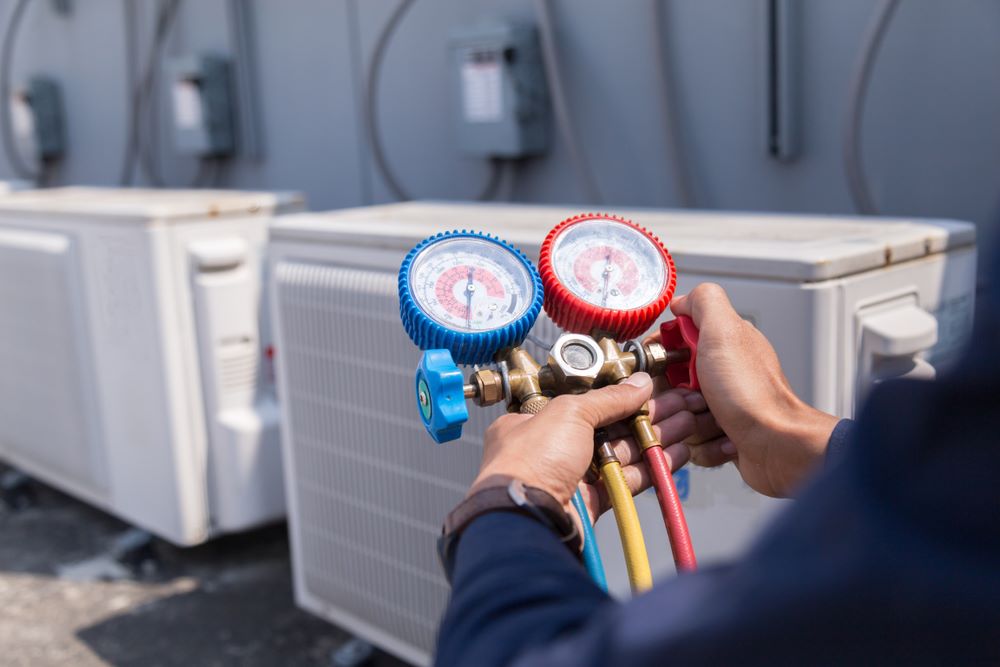Table of contents
Why Is Thermal Comfort Important?
What Affects Thermal Comfort?
Energy-Efficient Buildings And Occupant Comfort
The Importance Of Optimizing Temperature Control For Productivity
Hiring An Energy Consultant
How To Achieve Thermal Comfort With HVAC Designs
About Verde Solutions

Controlling and predicting thermal comfort in a building is vital when it comes to HVAC system design. In this guide, we are going to take a look at thermal comfort in further detail. We will take a look at why this is critical for all buildings and why this is the sort of service you should be looking for from an energy consultant.
Summary
- Thermal comfort impacts mood and productivity; balanced environments are essential for occupant well-being.
- Key factors include relative humidity, radiant temperature, air velocity, and clothing.
- An energy consultant can optimize HVAC systems for comfort and cost-efficiency.
Why Is Thermal Comfort Important?
The ideal indoor environment will provide a high level of comfort that is almost imperceptible to its occupants. Feeling comfortable in an interior space has a direct impact on a person’s mood. When people are too warm, they can feel tired; when they are too cold, they will be fidgety and agitated. In-office buildings especially, you can work better and think better if you are in optimal working conditions. Thermal comfort contributes to overall health, well-being, and even productivity. It is essential to eliminate possible health hazards if you are to maintain perfect comfort levels. However, thermal comfort is not simply finding a perfect temperature.
What Affects Thermal Comfort?
There are a number of different factors that can influence the thermal comfort experience in a building. This includes both environmental factors and personal factors.
In terms of environmental factors, this includes:
- Relative humidity (RH) – This is the ratio between the current amount of air vapor and the maximum amount of water vapor that can hold at that air temperature, expressed as a percentage.
- Radiant temperature (RT) – The temperature of a person’s surroundings is usually expressed as MRT, which stands for mean radiant temperature. This is the surfaces’ temperatures that surround an individual based on their weighted average as well as any strong mono-directional radiation, for example, solar radiation.
- Air velocity (AV) – Measured in m/s, this is the air contact velocity.
- Air temperature – Dry bulb temperature (DBT) is used to measure the air contact temperature.
There are also a number of personal factors that influence thermal comfort, such as:
- Metabolic heat – This relates to the heat that is created through physical activity. Typically, a person is going to feel cooler if they stay still when compared with someone who is moving all the time.
- Clothing – Clothing insulates a person from the exchange of heat with the surrounding surfaces and air.
Energy-Efficient Buildings And Occupant Comfort
A building that can claim to offer true high-performance levels is a building that is both occupants friendly as well as being energy efficient. Marrying these two measures is not always easy because they are typically treated independently. Research shows that this should not be the case though, as these are corresponding factors.
One method of measuring occupancy comfort alongside energy-efficiency properly is to use the ratio of Energy Utilization Index (EUI). This approach was introduced in a study entitled ‘Acceptability Index Value.’ In this study, the occupant acceptability is measured in percentage. This is designed to evaluate how effective energy utilization is in order to achieve a specified percentage of occupant acceptability. The study showcased how we can establish new metrics in order to figure out just how effective energy use is. This ensures that occupant performance, occupant responses, and productivity levels are of an acceptable amount in buildings.
Nevertheless, before you can figure out how energy efficiency works in regards to the comfort of the occupants, you first must figure out what the goals and objectives of the business are in the first place. For example, this could be to promote the performance and well-being of all of the occupants. It could also be to provide an environment that is healthy, secure, and safe too.
In order for these goals to be achieved, energy must be expended on a number of different building functions. This includes egress and ingress control, as well as acoustics, moisture control, cooling, heating, lighting, and electrical power too.
The Importance Of Optimizing Temperature Control For Productivity
There have been a number of different statistics regarding the importance of office temperature in relation to productivity levels. Many researchers have been trying to determine the perfect temperature for effectiveness in the workplace. In one study, carried out by CareerBuilder, they concluded that 53% of people believe that they are not as productive when the office is too cold. It is also safe to say that an office that is too warm can also have a negative impact on productivity as too much heat has a tendency to make us feel uncomfortable and often very sleepy.
In order to ensure that the right environment is provided for productivity, you need to make sure that you determine what your employees actually want. Employers might consider running a survey and to ask employees about the current temperature control and whether their workplace is operating at a comfortable temperature. It is also important to make sure that you make the most of the technology and software solutions that are available today. Thermostat controls have advanced dramatically over the years, giving people much more flexibility and control than ever before.
You should also consider alternative solutions. Even with the smartest technology on the market, there can still be disagreements between employees, which can leave some of them feeling unhappy. This is why it is important to encourage your staff members to speak up if they are not comfortable. You may want to move them to a different part of the office where they are going to be able to feel more comfortable and work to the very best of their ability.
Hiring An Energy Consultant
It is worth getting an energy consultant to carry out an energy audit at your business. They will be able to help you determine how to create the perfect temperature in your office without spending huge sums of money. An energy consultant may be able to determine where energy is currently being wasted and how to maximize energy savings and employee productivity.
How To Achieve Thermal Comfort With HVAC Designs
Designing an adequate HVAC system is not as complex as people assume it is. However, things can become a little bit more complex when it comes to designing an entire building, rather than focusing on a specific room. There are different floors and rooms to consider, which can have various thermal comfort parameters. This can mean different window placements, different room sizes, and a different number of people. There can also be differences in terms of electronic equipment. All of these things need to be taken into consideration early in the design stage.
There are a number of different ways that you can achieve thermal comfort with HVAC designs today. We are going to take a look at some solutions in further detail to give you a helping hand. The first is to maintain the thermal environment, making changes as required. Good maintenance is imperative if your HVAC equipment is to function properly. Rather than going for all-air systems, you may prefer to opt for a radiant heating/cooling system because maintenance effort and costs tend to be a lot lower.
You should also design and build for some occupant control. People are going to be most comfortable in a building when they have some degree of control over the system. Office employees will be able to increase thermal comfort by having operable blinds and windows and access to the thermostat.
An often overlooked problem with achieving thermal comfort is a leakage in the HVAC system. Making an effort to minimize leakage can improve the overall energy-efficiency of your system. Not only do leaks mean reduced thermal comfort, but they also indicate that the HVAC system is nowhere near as energy efficient as it should be. This means your HVAC system needs to work a lot harder, which means more energy used and more money spent.
Finally, you are also recommended to use an HVAC system that regulates MRT (mean radiant temperature). This is by far the greatest concern when it comes to managing thermal comfort for most occupants today. A radiant cooling/heating system can be the best method of maintaining the greatest level of thermal comfort for the majority of the occupants.
We hope that this guide has helped you to understand how you can achieve thermal comfort with HVAC designs. This can have a bigger impact than people realize, resulting in a positive change in terms of productivity and workplace effectiveness.
About Verde Solutions
Verde Solutions is full service, energy efficiency consultant firm founded on three main principles; Innovation, Sustainability, and Efficiency. At Verde, we create value for our clients and communities by providing innovative energy-efficient solutions. By reducing energy use and utilizing renewable energy, we lower costs and set a sustainable path for the future.

